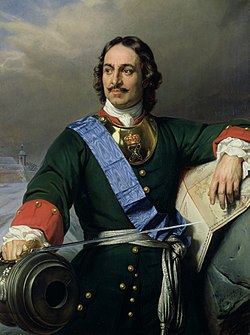| Il falegname di Livonia | |
|---|---|
| Opera buffa by Gaetano Donizetti | |
 Donizetti as a young man | |
| Librettist | Gherardo Bevilacqua-Aldobrandini |
| Language | Italian |
| Based on | Alexandre Duval's Le menuisier de Livonie |
| Premiere | |
Il falegname di Livonia, o Pietro il grande, czar delle Russie (The Livonian Carpenter, or Peter the Great, Tsar of the Russias) is an 1819 opera buffa in two acts with music by Gaetano Donizetti set to a libretto by Gherardo Bevilacqua-Aldobrandini. The libretto was based in part on Felice Romani's libretto for Giovanni Pacini's opera Il falegname di Livonia, which had just been presented at La Scala in Milan on 12 April 1819. Another source was Alexandre Duval's comedy Le menuisier de Livonie, ou Les illustres voyageurs (1805). [1]
Contents
Donizetti's Il falegname di Livonia was premiered on 26 December 1819 at the opening of the 1819/1820 Carnival season at the Teatro San Samuele in Venice. It was the fourth of Donizetti's operas to be performed during his lifetime and the first to achieve "more than one production". [2] It had about seven stagings until 1827, when its last known performance in the 19th century took place.

